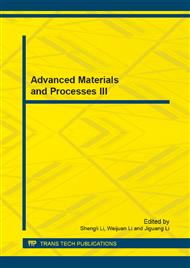p.577
p.582
p.587
p.591
p.595
p.601
p.605
p.610
p.617
Catalytic Destruction and Removal of Dichloromethane in the Microwave/Fe4O3 System
Abstract:
In this study, a new catalytic oxidation technology, microwave/Fe3O4 system, was used to treat volatile organic carbons (VOCs) and dichloromethane (DCM) was selected to simulate industrial emissions of VOCs. This system comprises a household microwave oven modified as the reaction chamber, which was fitted with a vertical, cylindrical quartz reactor comprising a catalytic packed column filled with granular Fe3O4, a microwave catalyst of iron (II, III) oxide. Experimental results showed that the destruction and removal efficiency (DRE) of DCM by microwave alone was close to zero, but with the microwave/Fe3O4 system, the temperature of the catalytic packed column increased rapidly and reached thermal balance within 10-15 min. Analysis of the rear gas after combustion showed that most of DCM was thermal oxidized into CO2 and H2O. The successful application of the proposed microwave/Fe3O4 system to thermal destruction of DCM promises a new technology for treatment of VOCs.
Info:
Periodical:
Pages:
595-600
Citation:
Online since:
September 2013
Authors:
Keywords:
Price:
Сopyright:
© 2013 Trans Tech Publications Ltd. All Rights Reserved
Share:
Citation:


